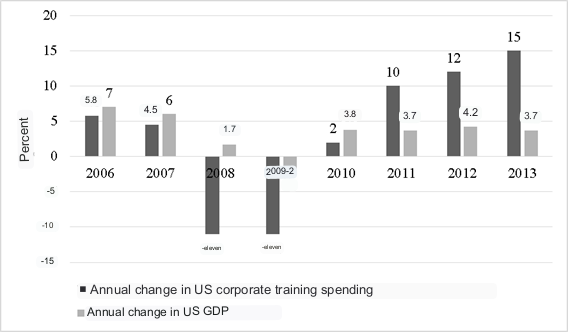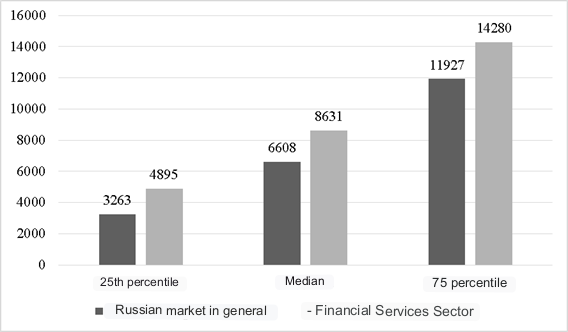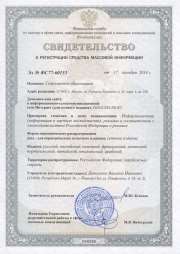|
MAIN PAGE
> Back to contents
Modern Education
Reference:
Shirinkina E.V.
The role of corporate universities in the modern world
// Modern Education.
2023. ¹ 1.
P. 1-10.
DOI: 10.25136/2409-8736.2023.1.30091 EDN: WJDASO URL: https://en.nbpublish.com/library_read_article.php?id=30091
The role of corporate universities in the modern world
Shirinkina Elena Viktorovna
PhD in Economics
Docent, the department of Management and Business, Surgut State University
628412, Russia, Tyumenskaya oblast', g. Surgut, ul. Lenina, 1, kab. 510

|
shirinkina86@yandex.ru
|
|
 |
Other publications by this author
|
|
|
DOI: 10.25136/2409-8736.2023.1.30091
EDN: WJDASO
Received:
23-06-2019
Published:
28-08-2023
Abstract:
The relevance of the research is due to the fact that corporate universities are experiencing an era of transformation today. Despite the rapid growth in the last 20 years of the population of corporate universities around the world, including in Russia, their global and regional associations are young and logically focus on the development of formats for the exchange of experience of their participants and, to a lesser extent, other tools for the institutionalization of the professional community. The subject of this research is to identify and review the main factors influencing the transformation of the role of corporate universities in the modern world, and the key global trends in corporate education to date. In the course of the work, the best practices and cases of the largest companies were analyzed. The empirical basis of the study was the cases of Sberbank Corporate University, Engie, Lufthansa, Unilever, GlobalCCU, etc. Each analyzed source was evaluated for the content of information about factors that affect and may affect corporate training, and global trends in the field of corporate training. The scientific novelty of the research consists in determining the factors influencing the trends of corporate training, their prioritization and a structured description of the identified factors and trends. The practical significance of this research lies in determining the role of a corporate university in the modern world, which will allow companies to form drivers of all transformations: business, operations, technologies and people.
Keywords:
education, digitalization, corporate training, training costs, trends, business processes, corporate universities, technology, factors, role
This article is automatically translated.
You can find original text of the article here.
Introduction Corporate universities are experiencing an era of transformation today. Despite the rapid growth in the last 20 years of the population of corporate universities around the world, including in Russia, their global and regional associations are young and logically focus on the development of formats for the exchange of experience of their participants and, to a lesser extent, other tools for the institutionalization of the professional community. On the other hand, the new technological revolution that is rapidly gaining momentum (in other terms, the "fourth industrial revolution") today requires a revision of the basic paradigms of education and a radical transformation of the models and mechanisms of corporate universities. Such intensive dynamics of the current changes in corporate training reflects the unprecedented acceleration of the renewal of this sphere under the influence of digital technologies. It is obvious that innovations in education are becoming a determining factor in the competitiveness of corporate universities in the XXI century. To meet the requirements of the digital world, corporate universities must, in fact, "reinvent themselves": to quickly move from the usual focus on managing the learning process (portfolio of programs) to managing the educational experience of its target audience, which now has access to a variety of channels for obtaining knowledge and skills and for which expectations of a personalized, adaptive and 24/7 format of interaction with corporate training systems are already natural. Therefore, the concept of "technology" is interpreted much more broadly today and includes not only innovative methods of education, possible thanks to the development of the Internet, mobile communications and virtual and augmented reality technologies, but also innovative management technologies to improve the effectiveness of corporate training [3,6,7]. A corporate university is an educational unit designed to support the strategic development of a company and be a catalyst for its renewal through the training of managers and other employees, as well as the creation, accumulation and dissemination of advanced knowledge within the organization. The main goal of the corporate university is to increase the competitiveness of the parent company through the formation and strengthening of its unique human capital and its organizational ability to grow and change at no less speed than the pace of changes in the business environment. Investments in corporate universities are a strategic project of the company to create an intangible asset (the infrastructure of a corporate university is secondary in this sense), which cannot be bought on the market and which is intended to become a source of its stable (extremely difficult to copy) competitive advantages – a deeply customized system of employee training and development, knowledge management and the introduction of corporate culture. Corporate universities differ from traditional universities by the synthesis of training and practical work on solving business problems of specific companies, and from traditional corporate training (training) centers by a systematic approach to talent development for solving strategic tasks of the company and internal expertise in advanced concepts and training methods. Research methodology The scope of corporate universities in the modern world is not limited to large companies – this format of corporate education is used in small and medium-sized companies, organizations of the non-profit sector, as well as in government bodies of federal and regional levels. In the case of public administration, examples may be: in the USA – Defense Acquisitions University at the federal level and Chesterfield University at the county level; in Russia – the University of Management of the Government of Moscow and the Corporate University of the Ulyanovsk Region. Today there are more than 4,000 corporate universities in the world [8]. The first corporate training centers as prototypes of modern corporate universities appeared in the USA in the 1950s. The explosive growth of corporate universities occurred in the 1990s-2000s: in the USA, their number increased from 40 in the mid-1980s to 400 in the early 1990s and more than two thousand in 2000, and in Europe, where universities began to appear since the early 1970s, their spread began actively in the 1990s, and by 2001 there were at least 100 of them here. Currently, almost all Fortune 500 rating participants have developed corporate universities. More than 40 corporate universities are active in Russia (more than 100 Russian companies have stated that they have a project or program "corporate university"). Already in the 1990s, leading companies in all economically developed regions of the world realized the key role of human capital in creating sustainable competitive advantages in the developing knowledge economy. Another factor in the growth of the population of corporate universities was the inability of traditional universities to keep up with the accelerating changes in labor markets and the requirements of companies for the practical skills of graduates. Finally, corporate globalization strategies and, in particular, the phenomenon of leading BRICS companies that have made global competitiveness and the creation of adequate personnel training systems their priority (examples: corporate universities Huawei, Infosys, Banco do Brasil, Sberbank) have become an incentive to create corporate universities. Corporate universities can be classified according to various characteristics and parameters. According to the organizational and legal form, corporate universities can be: - structural divisions of the company (as a rule, within the HR function or direct subordination to the CEO); - subsidiaries (in Russia, as a rule, in the status of ANO; examples: corporate universities of Rosatom, Roscosmos, Sberbank). According to the target audience, corporate universities can provide training: - for all employees of the company; - for managerial personnel (as an option - only for senior and middle management).
According to the program portfolio, corporate universities can vary quite widely: from a small family of programs for the development of key company leaders to an extensive (from several dozen to hundreds of positions) menu of programs for the development of "soft", professional ("hard") and digital skills of managers and employees, it can include both short trainings and long-term "level" programs for the transition to the next level of management, including diploma programs - mini-MBA and "non-academic Master's degree" (for example, UBS Master in Wealth Management, Repsol Energy Management Master), as well as various combinations of full-time, mixed, distance and electronic programs. Due to the availability of modern infrastructure, corporate universities can occupy from several premises in one of the company's offices to the territory of a full-fledged university campus with classrooms, conference halls, hotel and sports complexes. Many combinations of functional digital platforms for corporate training (virtual schools, educational portals, social media, etc.). Obviously, when the economy slows down, companies often reduce training costs, when the business grows, investments in the development and training of new employees and leaders also grow. This is one of the most discretionary of all corporate expenses, so it is also an excellent indicator of business confidence [1,4]. These arguments are also true in the opposite direction: if the economy is expected to grow steadily, then most likely we will see an increase in corporate training costs, and vice versa. Since 2010, the global economy has been recovering from the 2008-2009 crisis. This is noticeable in the dynamics of corporate training costs on the example of the USA (Fig.1). 
Fig. 1. The relationship between economic growth and corporate training costs in the USA is compiled according to: [12]. According to a global study by the Association for Talent Development (ATD) in 2015, the direct costs of organizations for training averaged $1,252 per employee [26]. This amount includes the costs of developing and conducting training programs, including the remuneration of personnel training and development specialists. At the same time, there are two main trends: - the growth of average direct training costs per employee. The increase of $23 in 2015 compared to the previous year is the largest since 2010, when businesses began to recover from the global economic crisis. At the same time, the average annual growth rate of tuition expenses in 2012-2015 amounted to 1.45% and continues to accelerate (in 2015 – 1.9%); - differentiation of direct training costs depending on the size of the company. Here the inverse dependence of unit training costs on the size of the company is found, which is largely explained by the scale effect.: thus, in 2015, training costs in small and medium-sized companies (with up to 500 employees) averaged $2,112, which is much higher than the global average of $1,252, while in large (500 to 9,999 employees) and largest (10 000 employees and above) amounted to $794 and $700, respectively. Modern digital technologies influence the change of customer experience, operational processes, and business models of modern companies. In general, digital transformation leads to radically new products, increased productivity and business value. At the same time, various sectors of the economy are currently subject to digital transformation to varying degrees: to a greater extent – IT companies themselves, telecommunications, financial services, to a lesser extent - industrial production, construction, public administration, although in the latter the influence of digital technologies is clearly increasing. Without dwelling on the characteristics of digital business transformation, which is not the subject of this report, we note that the impact of these processes on corporate training can be indirectly confirmed by relatively higher specific direct training costs in industries more susceptible to digital transformation. Interestingly, the same trend is found in the Russian corporate training sector. According to a study of Russian companies by PWC Saratoga in 2015 (fig. 2). 
Fig. 2. Training costs per employee per year in Russia in 2015, rubles. Compiled by: [11]. Note: The 25th percentile, median and 75th percentile divide the percentile scale into quarters. For example, if the value received by the company is at the 25th percentile, then 24% of the remaining values are below, and 75% are above it. If the value received by the company is at the 50th percentile (also called the median), then 49% of the remaining values will be below it, and 50% of all values will be above it. Thus, the median symbolizes a "typical" organization. The median unit cost of training in the financial services sector, which is more susceptible to digital transformation, is 31% higher than the median in the Russian market as a whole (6,608 rubles. for an employee in the whole market against 8,631 rubles. by the financial services sector). Similar differences are recorded for both the lower (25) and upper (75) percentile of the sample. At the moment, there are several main social factors that strongly influence the development of corporate training:: - generational change, - growth of information and ease of access to a wide audience, - demand for individualized content. Generation X (born from 1963 to 1983) is fading into the background, generation Y, or millennials (born from 1983 to 2003) are playing an increasingly significant role in the development of organizations. According to statistics, more than 80 million millennials now live in the USA alone [2, 9]. Like every other generation, millennials exhibit generalized and unique traits. The main unique features of this generation: 1. More tolerant attitude towards races and minorities than the previous generation (generation X); 2. striving for individualism;
3. high-tech multitasking, which is expressed in the ability to switch attention between media platforms, such as laptops, smartphones, tablets and televisions on average 27 times an hour; 4. active use of various social networks; 5. Obtaining information mainly from television programs and the Internet. The amount of available information is growing exponentially (Fig. 3). From 2011 to 2015. the amount of digital information in the public domain has increased more than 4 times [5,10]. That is, about a quarter of all available content is created in a year. And all this is at the expense of ordinary people who share knowledge and express themselves. This trend also extends to educational content. 
Fig.3 - Estimation of the growth of available digital information in zetabytes. This trend has two interesting consequences from the point of view of the development of corporate training. Firstly, the content becomes obsolete very quickly - it can be both obsolescence and obsolescence in the sense that the content will no longer work or will be very difficult to sell, since it is freely available. And secondly, it is increasingly difficult to find access to the consumer, as the competition for his attention is getting higher. Both of these consequences affect corporate training. The first forces you to react faster to new trends, and the second forces you to differ and specialize. In the struggle for consumers, the Internet produces increasingly individualized content based on the needs of a particular person. Internet resources stimulate and support this trend by helping to find such content. Thus, in order to interest the consumer, it is necessary to offer something necessary and potentially interesting to him. At the same time, it is important to offer it, since in a huge and constantly changing information field, he may simply not know about the existence of specific content. This is also relevant for corporate training, when the requirements for skills are becoming more specific and educational content is multiplying, and the employee has the freedom to choose the direction of development. Conclusions In this study, the role of corporate universities in the modern world was formulated and the main factors influencing corporate universities and education in general are described in a structured manner: - changes in the business environment, including economic growth affecting the volume of investments in corporate training, as well as an acute shortage of specialists with the necessary skills and knowledge; - social changes: generational change, an increase in the volume of information and the possibility of easy access to a wide audience, as well as an increase in demand for individualized content; - the development of technologies, reflected in the widespread increase in the level of automation of processes, increased mobility, as well as the development of virtual reality technologies. The following key trends were identified, which include trends related to changes in paradigms and models of corporate training: - driver of strategic changes: creating a strategic partnership with business; - part of the ecosystem: formation of an educational ecosystem and acceleration of its development around the customer's business; - profit center: transition from cost center model to profit center model; - performance evaluation (learning impact): the impact on the achievement of existing business goals/objectives and personal career goals of students. As well as trends related to changes in technologies and processes of corporate training: - formation of educational experience: transition from formal to informal learning; - the growth of digitalization of learning; - creating a learning culture: promoting learning based on a self-service system. Thus, it is obvious how the role of a corporate university is changing in the modern world. Under the influence of external factors, the learning paradigm itself is transformed: learning becomes the driver of all transformations: business, operations, technologies and people. Bibliographic list 1. Kaufman, N.Yu. The impact of innovations on the labor market in the conditions of competitiveness of human capital [Text] / N.Yu. Kaufman // Economics and management: problems, solutions. - 2018. - Vol. 2. - No. 6. - pp. 98-104. 2. Kaufman, N.Yu. The effectiveness of material incentives for personnel in the period of innovative development of the organization [Text] / N.Yu. Kaufman // Economics and Management: problems, solutions: scientific and practical journal. - 2019. - No. 1. - Vol. 5 (85). - pp. 59-63. 3. Kaufman, N.Yu. Reasons and ways of solving informal employment in Russia [Text] / N.Yu. Kaufman // Trends in the development of science and education. - 2018. - No. 44-2. - pp. 53-56. 4. Kaufman, N.Yu. Transformation of knowledge management in the conditions of digital economy development [Text] / N.Yu. Kaufman // Creative Economy. - 2018. - Vol. 12. - No. 3. - C. 225-228. 5. Kaufman, N.Yu. The role of human capital in modern organizations [Text] / N.Yu. Kaufman // Northern region: science, education, culture. - 2014. - ¹ 2 (30). - Pp. 22-26.
6. Kelchevskaya, N.R., Shirinkina, E.V. Integration of educational and professional standards in the conditions of reform: problems and solutions [Text] / N.R. Kelchevskaya, E.V. Shirinkina // University management: practice and analysis. - 2018. - Vol. 22. - No. 1 (113). - pp. 16-25. 7. Kibanov, A.Ya. Personnel management of the organization: textbook [Text] / A.Ya. Kibanov - M.: Publishing house: INFRA - M, 2014. - 695 p. 8. Muravyeva, A.A., Oleynikova, O.N., Aksenova, N.N. Multidimensional space of student-centered learning [Text] / A.A. Muravyeva, O.N. Oleynikova, N.N. Aksenova // University Management: Practice and Analysis. - 2017. - Vol. 21. - ¹ 3 (109). - Pp. 92-99. 9. Orlova, E.R., Koshkina, E.N. The evolution of learning technologies in the aspect of information technology development (The first half of the XX century – the beginning of the XXI century.) [Text] / E.R. Orlova, E.N. Koshkina // Educational resources and technologies. – 2017. – N4 (21) pp. 68-75. 10. Semenova T.V., Vilkova K.A., Shcheglova I.A. // Questions of education. – 2018. – N2. – c.173-197. 11. Pinheiro, M. Handbook of Research on Engaging Digital Natives in Higher Education Settings / By Pinheiro M. - IGL Global. – 2016. - 500 p. 12. Tobias, H., Werner, B. Korte, Eriona, D. Working Paper e-Skills in Europe Trends and Forecasts for the European ICT Professional and Digital Leadership Labour Markets / H. Tobias, B. Werner Korte, D. Eriona. - Emrigisa. – 2015.- 42 p.
References
1. Kaufman, N.Yu. (2018). Influence of innovations on the labor market in terms of the competitiveness of human capital. Economics and management: problems, solutions, 2(6), 98-104.
2. Kaufman, N.Yu. (2019). The effectiveness of material incentives for personnel during the period of innovative development of the organization. Economics and management: problems, solutions: scientific and practical journal, 1(5(85)), 59-63.
3. Kaufman, N.Yu. (2018). Causes and solutions to informal employment in Russia. Trends in the development of science and education, 44-2, 53-56.
4. Kaufman, N.Yu. (2018). Transformation of knowledge management in the context of the development of the digital economy. Creative Economy, 12(3), 225-228.
5. Kaufman, N.Yu. (2014). The role of human capital in modern organizations. Northern region: science, education, culture, 2(30), 22-26.
6. Kelchevskaya, N.R., Shirinkina, E.V. (2018). Integration of educational and professional standards in the context of reform: problems and solutions. University management: practice and analysis, 22(1(113)), 16-25.
7. Kibanov, A.Ya. (2014). Organization personnel management. Moscow: Publishing house: INFRA-M.
8. Muravieva, A.A., Oleinikova, O.N., Aksenova, N.N. (2017). Multidimensional space of student-centered learning. University management: practice and analysis, 21(3(109)), 92-99.
9. Orlova, E.R., Koshkina, E.N. (2017). The evolution of learning technologies in the aspect of information technology development (the first half of the 20th century – the beginning of the 21st century). Educational resources and technologies, 4(21), 68-75.
10. Semenova T.V., Vilkova K.A., & Shcheglova I.A. (2018). Questions of education, 2, 173-197.
11. Pinheiro, M. (2016). Handbook of Research on Engaging Digital Natives in Higher Education Settings. Moscow: IGL Global.
12. Tobias, H., Werner, B. Korte, & Eriona, D. (2015). Working Paper e-Skills in Europe Trends and Forecasts for the European ICT Professional and Digital Leadership Labor Markets. Empirica.
Link to this article
You can simply select and copy link from below text field.
|
|




